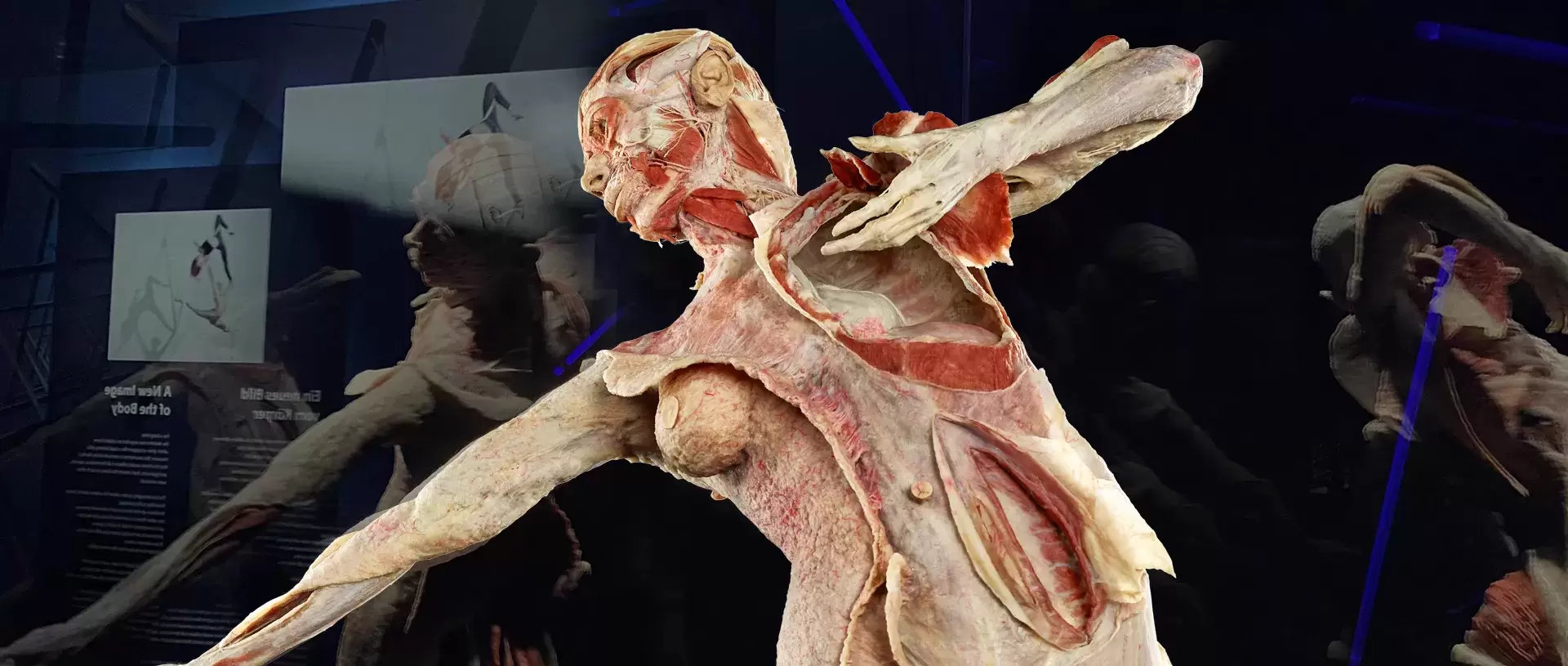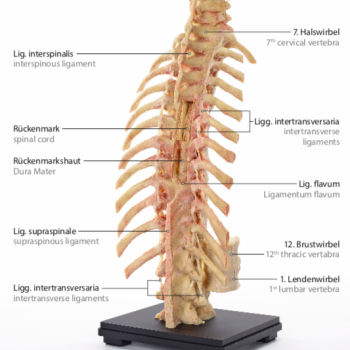The fascial structure of the human body is the basis of the manual bodywork method Rolfing® Structural Integration, the anatomy of which is taught early in Rolfing training. Particularly exciting for Rolfers® and those interested in Rolfing is therefore the new fascia area of the BODYWORLDS museum in Berlin: Here visitors can gain deep insights into the fascial connective tissue. Dr. Robert Schleip, fascia expert and Research Director of the European Rolfing® Association, has designed a special fascia guided tour as well as a matching teaching sheet for a fascia crash-course especially for the museum.
In addition to the world's first 3D fascia plastinate FR:EIA, the fascia area includes many partial plastinates, such as that of a human spine. This model illustrates that the individual vertebral bodies do not rest on each other, as previously assumed, but are kept in balance by traction and countertraction. In the human body, this function is performed by a three-dimensional system of fasciae and small muscles that keeps the spine upright. This insight sheds new light on the development and treatment of back pain. Especially because the fasciae of the back are particularly densely equipped with pain sensors - six times stronger than our muscles.
Visitors to the BODYWORLDS museum Berlin are invited to a special encounter with life and a lasting examination of their own bodies: It displays an extensive collection of plastinates that provide visitors with easily understandable detailed knowledge about individual organ functions as well as common diseases. It allows insights into the highly complex, but also fragile and protective structures of the body's interior and illustrates what connects humans, keeps them upright and in motion, what makes them laugh and love.
Autorin: Sabine Becker
Visit the BODYWORLDS Museum at Berlin Alexanderplatz.
Information about the Fascia Crash Course/Guided Tour
Interested in studying Rolfing? Check out our Myofascial Foundation Courses (including fascia anatomy).
Want to know more?
Sign up for our newsletter and receive regular information about Rolfing® Structural Integration.








